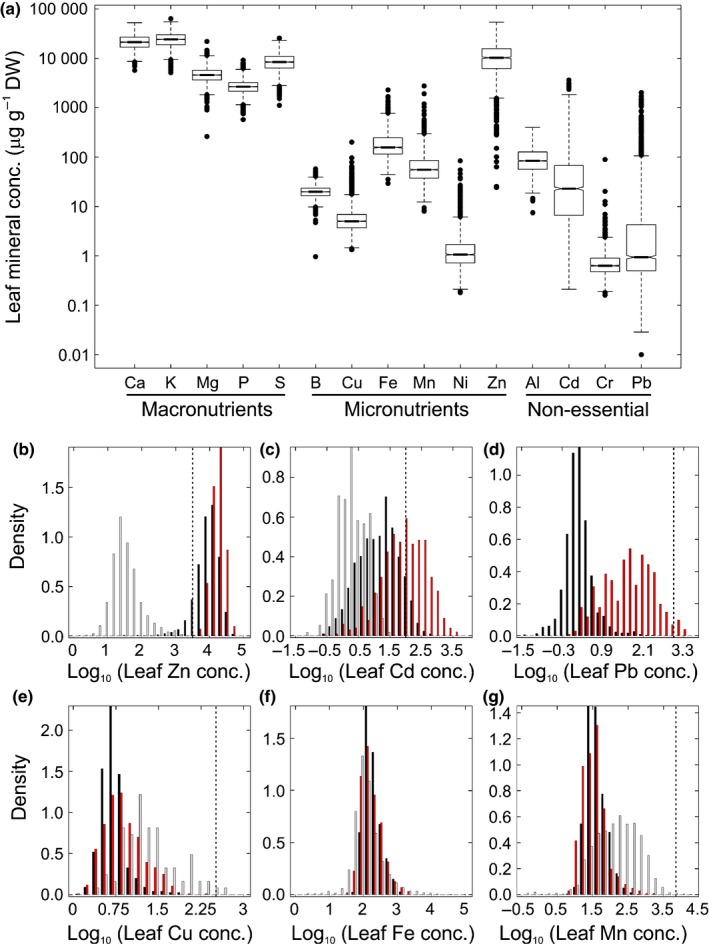Figure 1.

Element concentrations in leaves of Arabidopsis halleri sampled at their natural sites of growth. (a) Leaf concentrations of macronutrients, micronutrients and nonessential elements. Al, aluminium; B, boron; Ca, calcium; Cd, cadmium; Cr, chromium; Cu, copper; Fe, iron; K, potassium; Mg, magnesium; Mn, manganese; Ni, nickel; P, phosphorus; Pb, lead; S, sulfur; and Zn, zinc. Shown is the median (central horizontal line) with 25/75 percentiles (boxes), 10/90 percentiles (bars), and outliers (closed circles; > 1.5‐fold the interquartile range above/below the upper/lower quartile) (n = 1972 plant individuals). (b–g) Density histograms of leaf concentrations of Zn, Cd, Pb, Cu, Fe and Mn in A. halleri. Log10‐transformed data (class width 0.2) are shown for metalliferous (n = 506; red) and nonmetalliferous (n = 1466; black) soils, with a published multi‐species field survey (grey) shown for reference (Watanabe et al., 2007). Dotted vertical lines mark thresholds for metal hyperaccumulation (Zn, 3000 μg g−1; Cd, 100 μg g−1; Pb, 1000 μg g−1; Cu, 300 μg g−1; Mn, 10 000 μg g−1). The published dataset (Watanabe et al., 2007) included data for leaf Zn (n = 2193), Cd (n = 246), Cu (n = 19), Fe (n = 2039) and Mn (n = 2182) concentrations.
